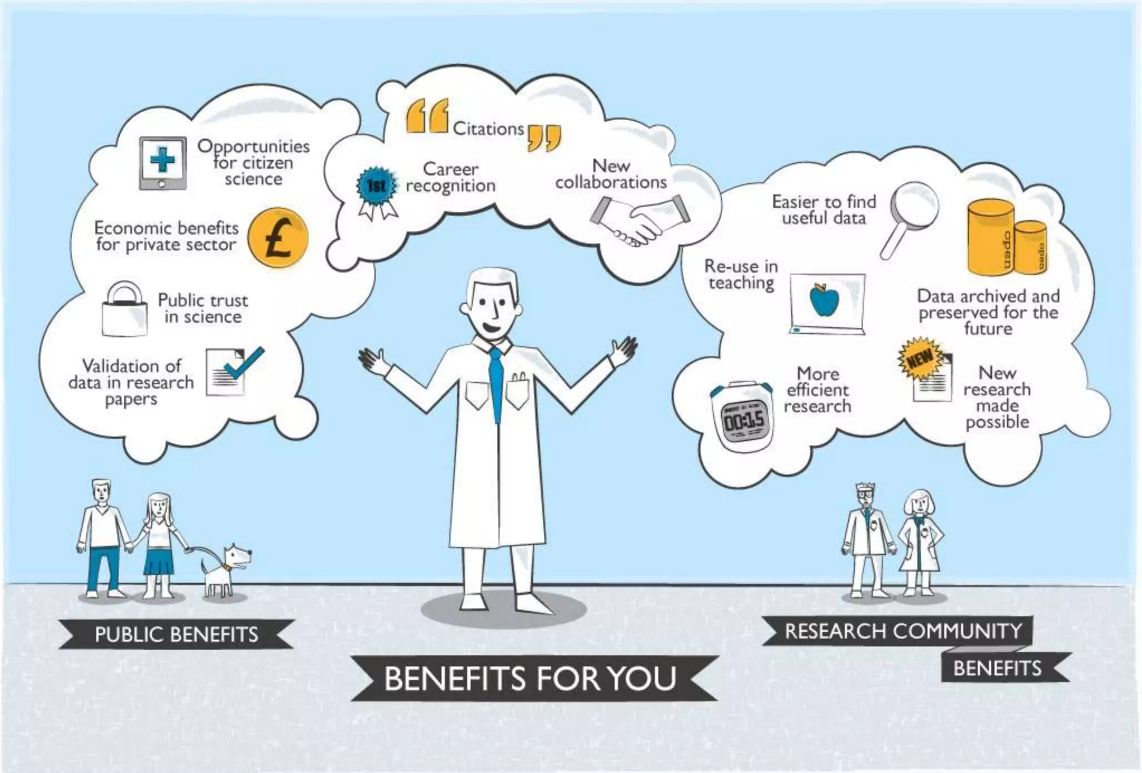Data Publishing
This page applies to all researchers who want to publish their data.
Motivation
In chemical research, we strive to share results with others, commonly through articles in renowned scientific journals. To be able to actually work with and build upon these results, the scientific community also requires the data that the results were based on.
Publishing and therefore sharing these chemistry research data in a FAIR manner by considering aspects such as persistent identifiers, rich metadata, provenance information, data formats standards for analytical data, information on the license applied, and by providing machine-readable chemical structures adds value to the research results and enables discovery and reuse.
To publish data is essential to ensure that findings are transparent and reproducible. Moreover, it prevents duplicate efforts to generate data, hence, data publishing is also a measure of sustainability.
Benefits of data publishing
There are direct benefits for researchers who publish their data. Data publications increase your career recognition, enable new collaborations, and provide a citation advantage compared to articles without an associated and linked dataset in a research data repository.

(Source: Brian Hole, CC BY 4.0, Slideshare)
Additionally, the research community benefits here as, for example, new research is made possible and efficiency in research increases. Also the public sector will profit by enhanced public trust in science, as data publishing allows for the validation of research results. Nonetheless, the publication of data is also of economic benefit if the results can be reused by the private sector.
How to start
There are two main ways to publish research data:
- publish data in a research data repository
- publish a separate data article with the corresponding dataset published in a research data repository
Field-specific repositories should be the first choice as these repositories enhance the FAIRness of data on behalf of the submitters. To retain the same level of FAIRness, data publishing in generic repositories requires manual FAIRification.
Smart Lab solutions, such as Chemotion ELN, can offer built-in workflows to assist researchers in publishing data. If the data is already documented in a structured way in Chemtotion ELN, then the data can also be published in this structured way via Chemotion Repository.
Further information on repositories, including a list of recommended chemistry-friendly repositories, is provided on our pages on repositories and guide on how to choose the right repository.
A data availability statement in the back matter of a manuscript communicates how the data has been shared and how it can be accessed by others. Datasets and scientific publications should be interlinked using persistent identifiers.
Still confused about how to publish chemistry data? We do provide a consulting and data stewardship service via our Lead by Example project. Have a look at Lead by Example Datasets for inspiration!
Sources and further information
- The citation advantage of linking publications to research data
- NSF Public Access Plan 2.0
- DFG Code of Conduct, Guideline 13: Providing public access to research results
- How does Open Science practice differ between research disciplines?
Main authors: ORCID:0000-0002-6243-2840 and ORCID:0000-0003-4480-8661